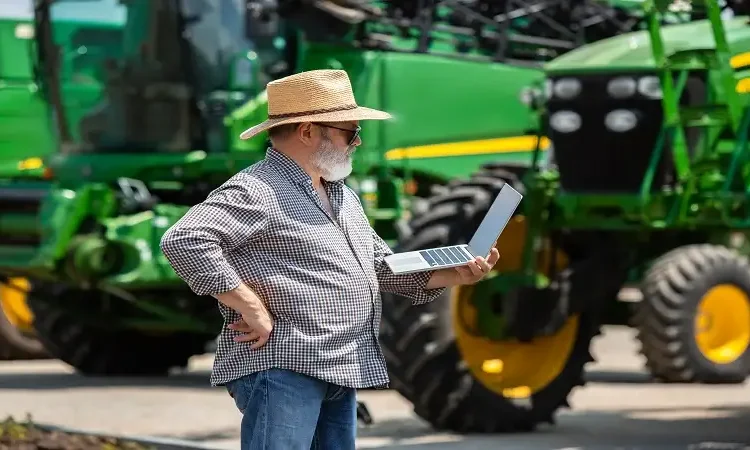The “big green tractor” is more than just a piece of agricultural machinery; it is a symbol of rural life, agricultural innovation, and the backbone of farming communities around the world. This iconic machine, often associated with the John Deere brand, represents a blend of history, technology, and the enduring spirit of farming. In this article, we will explore the significance of the big green tractor, its evolution over the years, its impact on agriculture, and its cultural relevance.
The Genesis of the Big Green Tractor
The origins of the big green tractor can be traced back to the early 20th century when the John Deere Company, founded in 1837, began to revolutionize farming with innovative machinery. The company’s signature green color and the iconic deer logo have become synonymous with quality and durability in the agricultural world.
John Deere’s foray into tractor manufacturing began with the Model D, introduced in 1923. This model set the stage for future advancements in tractor technology. The Model D was known for its reliability and power, which made it a popular choice among farmers. Its design was robust, capable of handling various agricultural tasks with ease.
Technological Advancements
As technology advanced, so did the design and capabilities of the big green tractor. Over the decades, John Deere and other manufacturers have incorporated numerous technological advancements into their tractors. These innovations have significantly enhanced the efficiency and productivity of farming operations.
- Hydraulic Systems: Early tractors relied on manual labor for adjustments and attachments. The introduction of hydraulic systems revolutionized the industry by allowing farmers to make adjustments with ease and precision. This technology improved the overall functionality and versatility of tractors.
- GPS Technology: In recent years, the integration of GPS technology has been a game-changer for modern tractors. GPS systems allow for precise navigation, enabling farmers to optimize fieldwork and reduce overlap. This technology has not only improved efficiency but also contributed to more sustainable farming practices.
- Advanced Engines: Modern big green tractors are equipped with powerful engines that offer greater fuel efficiency and reduced emissions. This advancement has made it possible for tractors to handle larger tasks with less environmental impact.
- Automation and AI: The latest models of big green tractors are incorporating automation and artificial intelligence (AI) to further enhance their capabilities. Features such as autonomous driving and intelligent farming systems are setting new standards in the industry.
The Impact on Agriculture
The big green tractor has had a profound impact on agriculture, transforming the way farmers work and increasing the productivity of farms. Some key areas of impact include:
- Increased Efficiency: Tractors have drastically reduced the amount of manual labor required for farming. Tasks such as plowing, planting, and harvesting can now be completed more quickly and efficiently, allowing farmers to manage larger areas of land.
- Improved Soil Management: Modern tractors are equipped with advanced tools and attachments that help improve soil management. This includes precision planting and tillage, which contribute to better crop yields and soil health.
- Enhanced Crop Production: With the use of big green tractors, farmers can employ more precise and effective planting techniques. This has led to increased crop production and better overall food security.
- Sustainability: The advancements in tractor technology have also contributed to more sustainable farming practices. For instance, improved fuel efficiency and reduced emissions help minimize the environmental impact of agricultural activities.
Cultural Significance
The big green tractor has also carved a niche in popular culture, symbolizing the hard work and dedication of farmers. Its presence is often celebrated in rural communities and has become an emblem of agricultural heritage.
- Music and Media: The big green tractor has made its way into music and media, most notably in country music. Songs like “Big Green Tractor” by Jason Aldean celebrate the rural lifestyle and the iconic tractor’s role in it. This song has helped cement the tractor’s place in the cultural landscape.
- Festivals and Shows: Agricultural festivals and tractor shows often feature big green tractors as highlights. These events celebrate the history and evolution of farming machinery and provide a platform for enthusiasts to showcase their prized tractors.
- Historical Significance: The big green tractor is not only a symbol of modern farming but also a historical artifact. Vintage models are preserved and exhibited in museums and collections, serving as a reminder of the technological progress made in agriculture.
Future Prospects
Looking ahead, the big green tractor will continue to evolve as technology advances. The future of agriculture is likely to be shaped by further innovations in tractor design and functionality. Some potential developments include:
- Electrification: The push towards sustainable energy sources may lead to the development of electric or hybrid tractors. These vehicles could offer a more eco-friendly alternative to traditional diesel-powered tractors.
- Enhanced Connectivity: The integration of the Internet of Things (IoT) and enhanced connectivity features may enable more sophisticated data collection and analysis, further optimizing farming practices.
- Robotics and Automation: The use of robotics and automation is expected to increase, with tractors becoming more autonomous and capable of performing complex tasks with minimal human intervention.
Conclusion
The big green tractor is much more than a piece of machinery; it is a symbol of progress, efficiency, and the enduring spirit of farming. From its humble beginnings to its current state of technological sophistication, the big green tractor has played a pivotal role in shaping the agricultural industry. Its impact on farming practices, its cultural significance, and its potential for future innovation all contribute to its status as an enduring icon of rural life. As technology continues to advance, the big green tractor will undoubtedly remain a central figure in the evolution of agriculture. See More




